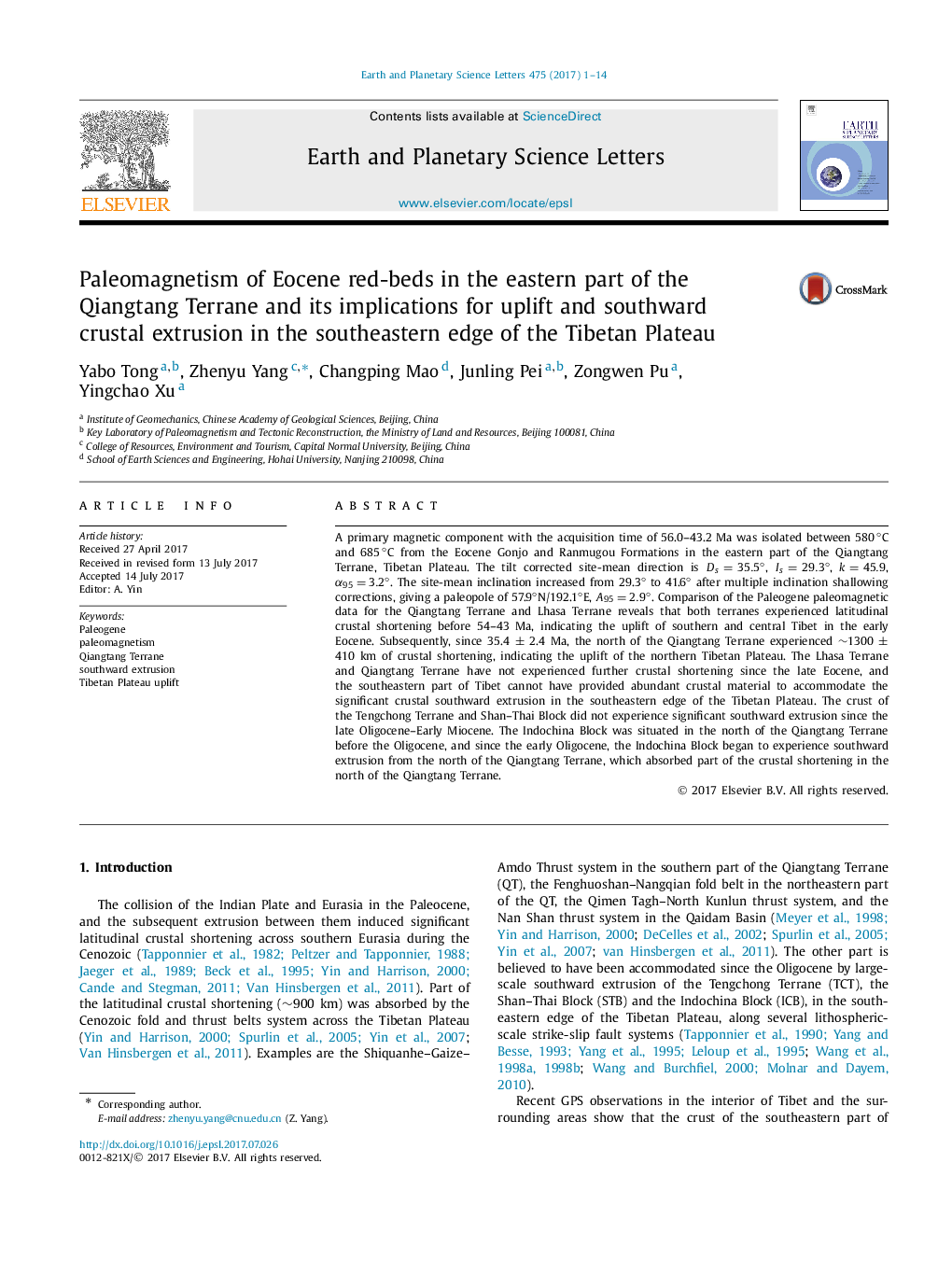| کد مقاله | کد نشریه | سال انتشار | مقاله انگلیسی | نسخه تمام متن |
|---|---|---|---|---|
| 5779651 | 1634681 | 2017 | 14 صفحه PDF | دانلود رایگان |
عنوان انگلیسی مقاله ISI
Paleomagnetism of Eocene red-beds in the eastern part of the Qiangtang Terrane and its implications for uplift and southward crustal extrusion in the southeastern edge of the Tibetan Plateau
دانلود مقاله + سفارش ترجمه
دانلود مقاله ISI انگلیسی
رایگان برای ایرانیان
کلمات کلیدی
موضوعات مرتبط
مهندسی و علوم پایه
علوم زمین و سیارات
علوم زمین و سیاره ای (عمومی)
پیش نمایش صفحه اول مقاله

چکیده انگلیسی
A primary magnetic component with the acquisition time of 56.0-43.2 Ma was isolated between 580â°C and 685â°C from the Eocene Gonjo and Ranmugou Formations in the eastern part of the Qiangtang Terrane, Tibetan Plateau. The tilt corrected site-mean direction is Ds=35.5°, Is=29.3°, k=45.9, α95=3.2°. The site-mean inclination increased from 29.3° to 41.6° after multiple inclination shallowing corrections, giving a paleopole of 57.9°N/192.1°E, A95=2.9°. Comparison of the Paleogene paleomagnetic data for the Qiangtang Terrane and Lhasa Terrane reveals that both terranes experienced latitudinal crustal shortening before 54-43 Ma, indicating the uplift of southern and central Tibet in the early Eocene. Subsequently, since 35.4 ± 2.4 Ma, the north of the Qiangtang Terrane experienced â¼1300 ± 410 km of crustal shortening, indicating the uplift of the northern Tibetan Plateau. The Lhasa Terrane and Qiangtang Terrane have not experienced further crustal shortening since the late Eocene, and the southeastern part of Tibet cannot have provided abundant crustal material to accommodate the significant crustal southward extrusion in the southeastern edge of the Tibetan Plateau. The crust of the Tengchong Terrane and Shan-Thai Block did not experience significant southward extrusion since the late Oligocene-Early Miocene. The Indochina Block was situated in the north of the Qiangtang Terrane before the Oligocene, and since the early Oligocene, the Indochina Block began to experience southward extrusion from the north of the Qiangtang Terrane, which absorbed part of the crustal shortening in the north of the Qiangtang Terrane.
ناشر
Database: Elsevier - ScienceDirect (ساینس دایرکت)
Journal: Earth and Planetary Science Letters - Volume 475, 1 October 2017, Pages 1-14
Journal: Earth and Planetary Science Letters - Volume 475, 1 October 2017, Pages 1-14
نویسندگان
Yabo Tong, Zhenyu Yang, Changping Mao, Junling Pei, Zongwen Pu, Yingchao Xu,